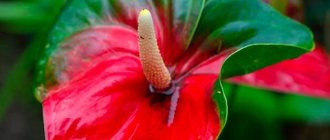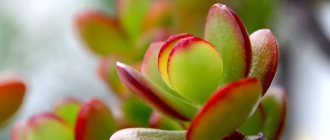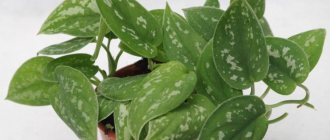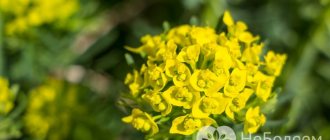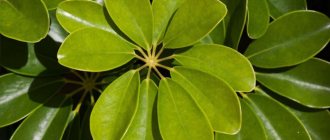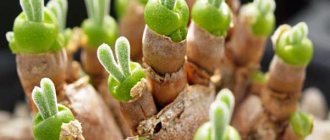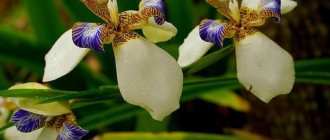Campsis - decorative vine
Surely those who have been to the south have paid attention to the decorative climbing plant with large orange flowers that look like gramophones.
But not everyone knows that it is called kampsis. In our country, this vine is distributed mainly on the Black Sea coast. Campsis is a perennial tree-like deciduous vine of the bignonium family, growing up to 15 meters in length. There are two species of this plant: Campsis radicans, native to North America, and Campsis grandiflora, from China. Large feathery leaves and bright funnel-shaped flowers make this plant decorative. It blooms profusely and for a long time: from June to September. Flowers, depending on the variety, are orange, yellow or red.
Campsis is a fast-growing, unpretentious plant. One of the important advantages of which is its smoke and gas resistance; the plant easily adapts to the conditions of a modern city. The only thing that holds back widespread use is the heat-loving nature of this vine. Campsis is able to withstand short-term temperature drops down to -20°, but in more severe winters it requires additional shelter.
Varieties and varieties of morning glory
Farbitis is the largest genus of the bindweed family and has more than three hundred species. Some members of this genus, such as sweet potatoes and water spinach, are used as food. In regions where the climate is subtropical and tropical, it is perennial, but in our country it is an annual crop. Exotic flowers are beautiful, usually bloom for only 1 day, but so many new buds appear immediately that the losses are not noticeable at all. The main types include:
- Purple morning glory is the most sought after species due to its unpretentiousness. Varieties of this species include: Giselle with lilac-blue gramophone flowers reaching 150 mm in diameter, Scarlet O Hara, blooming with cherry bells, striped Milky Way.
Attention: do not forget - farbitis, despite its mesmerizing beauty, is a poisonous vine, which, of course, does not apply to food species.
Growing and care
In regions with a mild climate, Kampsis does not cause much trouble. This is a light-loving and heat-loving plant that requires a protected location. It can grow on any non-acidic soil, but prefers loose and well-fertilized soil.
Campsis can tolerate drought, but it needs to be watered regularly to bloom profusely. The plant responds well to nitrogen-phosphorus fertilizing, which promotes more luxuriant color and increases the duration of flowering.
Campsis grows quickly, so it needs regular pruning, which should be done annually, leaving only lignified perennial shoots intact. Pruning is best done in late winter or early spring.
Timely removal of faded flowers and pruning of faded shoots by two or three eyes will increase the duration of flowering, and the plant will look more attractive.
In regions with cold winters, Kampsis must be covered for the winter. To do this, the shoot is removed from the supports, straightened, laid on the ground and sprinkled with soil.
Campsis is a resistant plant and is rarely affected by diseases and pests, however, with prolonged heat and insufficient watering, it can be attacked by aphids, which can be combated with an alcohol solution of laundry soap.
How to plant morning glory and care for it
Ipomoea annual is tolerant of all conditions, but grows better with proper planting and good care. It loves light and warmth, loose, non-acidic soil, and quickly climbs supports, but some varieties do well without them, covering the ground on the slopes with a thick multi-colored carpet. It responds to abundant watering by rapid growth and cannot tolerate stagnant water. Drying out the soil is very undesirable - the leaves wither and the flowers do not open. The best place to plant it is south, southeast or west. It also grows in the shade on the north side, but it grows very tall and almost does not bloom. She feels uncomfortable in places blown by strong winds. Therefore, it is ideal when the bed is protected.
It begins to bloom in the morning, and as soon as the sun warms up, the gramophones close, but if it is cloudy during the day, the flowers remain open all day. Moving from place to place is very painful. It does not tolerate frosts, and moonflowering farbitis generally stops flowering already at 10 degrees. Often this plant is sown in pots or containers to decorate and protect a balcony or terrace from the hot sun.
Reproduction
Campsis is easily propagated by root shoots, layering, cuttings (both green and lignified), and seeds. To obtain a standard form, it can be grafted onto a catalpa.
The easiest way to propagate a plant is by planting root shoots, especially since they form in abundance around an adult plant. This should be done when the plant is dormant. The shoot is cut off with a piece of root and immediately planted in a permanent place.
Reproduction by layering is used when the shoots are located low above the ground. It is enough to simply fix such a shoot on the ground and ensure that it is constantly moist. It will take root over the summer. In the spring of next year, the cuttings must be separated from the mother plant and planted in a permanent place. Campsis propagated in this way grows very quickly.
Propagation by cuttings is also very effective. The cuttings are cut in June-July and planted in a shaded place in loose, fertile soil, which should then be mulched to avoid moisture loss. Lignified cuttings are cut in winter or early spring and planted obliquely. They can be immediately planted in a permanent place, since the survival rate of such cuttings is very high.
The seed method of propagation is rarely used and mainly in cases where vegetative propagation is difficult. Seeds are sown for seedlings in March in loose, well-moisture-retaining soil to a depth of about half a centimeter and watered as they dry. In the phase of 5-6 true leaves, the seedlings are planted in a permanent place.
Campsis in vertical gardening
Fans and admirers of vertical gardening will certainly be interested in the amazingly beautiful ornamental garden vine Kampsis .
The genus Campsis from the family Bignoniaceae includes two species: Campsis rootosa, native to North America, and Campsis grandiflora, native to China. Both species are very spectacular climbing deciduous plants with large odd-pinnate leaves (up to 25 cm in length) and large scarlet or orange flowers of an original shape.
Campsis rooting is a large and powerful vine with many aerial roots on its stems, thanks to which it easily and naturally climbs supports to a height of up to 15 meters. Funnel-shaped tubular flowers with a bright orange corolla are gracefully bent at the edges, forming a scarlet frill. They reach a size of up to 8 cm in length and 5 cm in diameter, collected in apical clusters of 10-12 flowers.
The flowering of Kampsis, due to the sequential opening of flowers, is very abundant and long-lasting. Already from mid-summer, the dense foliage of this climbing plant is covered with eye-catching flashes of textured inflorescences.
Campsis grandiflora does not have aerial roots and climbs the support, clinging to it with the ends of the shoots. An adult plant successfully covers an area of up to 10 sq.m. Its flowers are much larger than those of its counterpart and reach 9 cm in diameter. The fiery orange color of the impressive bell-shaped inflorescences adorns the flowering vine from July until September.
Planting and care
Campsis is propagated by seeds, root cuttings and layering. Seeds are usually sown in autumn in greenhouses and greenhouses, and in the southern regions, stratified seeds are sown in open ground as early as April. During the first year, seedlings develop a powerful root system, growing up to 1 meter in height, after which they can be replanted.
The disadvantage of this method of propagation is that the plants begin to bloom only after 6-7 years, while root cuttings taken for propagation bloom already in the third year of the growing season. In the second or third spring, the cuttings are obligatory pruned, leaving 2-4 main shoots. Annual pruning forms the skeleton of the young plant, which is very important for this fast-growing vine.
Campsis is not too picky about soil conditions, but will not refuse loose, fertile and well-moistened soil in the sunniest corner of your garden. Caring for it consists of regular pruning of small root shoots, and in the spring, last year's shoots are removed.
Campsis is quite frost-resistant and can withstand temperatures down to -20°C. In areas with a more severe climate, the upper shoots of plants are removed from their supports for the winter, laid horizontally and covered with spruce branches.
Usage
Campsis is thermophilic; a warm, sunny wall of the house is ideal for it. The speed of its growth allows it to very quickly climb to the very roof, covering the walls of the building with an even carpet. For landscaping pergolas, gazebos and creating a spectacular hedge, it is better to use Campsis grandiflora.
This plant also grows well on a trellis and tolerates shearing well. With regular pruning it grows like a shrub, can be used as a border plant and is certainly great in standard form.
Partners
Campsis is inimitable as a tapeworm. Even in the absence of flowering, its foliage looks very decorative on the wall of the house, keeping heat and dust from entering the home.
Gloxinia: how to properly grow a violet-like flower?
- Full photo
Gloxinia
Description and types of flower
Reproduction of Gloxinia
Care during the flowering period
Caring for gloxinia during the dormant period
Plant diseases and pests
Gloxinia is native to the American tropics. It is a perennial herbaceous plant or shrub with velvety or smooth leaves and delicate bell-shaped flowers. Almost all hybrid indoor gloxinias currently cultivated are created from Sinningia beautifula. This, unlike true gloxinia, is a tuberous plant with velvety leaves. Their flowers are similar, which was the reason for the confusion with the name.
Campsis - flowering deciduous vine
Campsis is a flowering deciduous vine with bright flowers that look like small trumpets from the first gramophones. Liana has become popular due to its lush decorative appearance and unassuming character.
This plant has amazing abilities to use supports; campsis can climb the wall of a house or any other structure to a height of more than 10 meters. The campsis is helped to climb up the supports by aerial sucker roots and wrapping around the ends of the shoots.
The beauty of the plant is given by large scarlet or orange flowers and spreading branches with large leaves. Campsis flowers are odorless, but contain a lot of nectar, which attracts a lot of flying insects and ants.
Campsis is a climbing perennial plant for which the ideal conditions are sun, warmth and absence of drafts. Campsis belongs to the genus of woody vines of the bignoniaceae family, therefore it is also called bignonia, and there is also another name - tekoma.
Despite its southern origin, Kampsis is liked by gardeners in the Middle Zone, who successfully grow it in their garden plots, enjoying flowering from June to September.
Fertilizer and feeding
In a generously fertilized area, farbitis will quickly grow, forming succulent leaves and few flowers. Therefore, you should fertilize the garden bed with humus sparingly, but feed it regularly. To grow a lush, densely flowered vine, you need:
- Feed her weekly with a full range of microelements;
- apply fertilizer with a maximum phosphorus content and a minimum of nitrogen, which stimulates flowering.
Campsis - flowering deciduous vine
Choosing a landing site
Campsis is not too picky about the soil, but shows its best decorative properties in loose, fertile soil. The plant feels very good on the south side of the building; for example, the south side of the house is suitable for planting campsis, which gives additional warmth to the plant from the wall heated in the sun.
Considering that Kampsis produces a lot of root shoots, it is advisable to fence the place allocated to this plant with slate or sheet iron, digging them into the ground to a depth of 70 cm.
Planting Kampsis
A hole for planting a seedling needs to be dug about half a meter from the wall of the building and it is best to do this in advance, in the fall. The size of the hole should be approximately twice as large as the ball of soil of a seedling with a closed root system.
Seedlings are planted in the spring, in the second half of May, when all spring frosts have passed. The free space in the pit is filled with excavated soil mixed with organic and mineral fertilizers.
For drainage, sand or gravel should be poured into the bottom of the hole. The seedling in the hole is placed at an angle to the wall and tied to a trellis. Next, the plant is watered, and the tree trunk circle is mulched with compost or peat.
Reproduction of Kampsis
Bignonia can also be grown by seeds, which are planted in damp soil in March, constantly keeping the soil moist. The first shoots appear after 3 - 4 weeks, after which the box with seedlings is exposed to the sun.
At the end of May, when several leaves appear, the plant is transplanted into open ground or continued to be grown at home: in a room or on a balcony, adjusting the size of the plant by pruning.
The method of growing tecoma by seeds is not very popular, since the plant begins to bloom only after a few years (usually after 5 - 7 years).
The fastest and most effective way to propagate Kampsis is through rhizome shoots that grow around plants. The root shoots, together with the root, are separated from the main rhizome and planted in a permanent place.
Plant varieties
Such a funnel-shaped plant over time, throwing out its creeping shoots, forms a bushy appearance. There are enough varieties of bindweed to experiment with decorating your site, and there are enough colors to create the most unique design.
The two most important types: • Tricolor bindweed; • Moorish bindweed.
Most often, this plant is grown as an annual specimen. Since bindweed is very sensitive to frost, it can even be grown indoors. Its flowers begin to open as soon as the sun comes out, and at sunset they close.
Application
As a rule, all varieties of bindweed prefer loose soil and a sunny location. And if you plant them next to suitable herbs, a rather pretty picture will form. Bright shades are best planted next to plain annual neighbors.
Landing places: • Rabatki; • Flower beds; • Hanging baskets; • Rock gardens; • Slopes.
This plant has a very compact shape, due to which it looks good in flower beds, as a frame, and ridges. With their help you can create amazing floral carpets. Moorish bindweed, with its trailing shoots, can be placed in hanging baskets that will look good on the tops of walls. This will create an amazing cascade of flowers.
Care and planting
To get strong bindweed seedlings, you can plant its seeds in a pot in early April, and plant them in open ground in May. You will need: • Pitchforks; • Sand; • Rake; • Compost; • Plant seeds.
Tricolor bindweed can be sown directly into open ground in early May. To do this, before planting, you first need to soak the seeds in water for one day.
At a depth of about twenty centimeters, the soil should be loosened with a pitchfork, and heavy soil should be fertilized with compost and sand. Smooth surface, remove large lumps and stones.
The seeds should be sown in a thin layer and lightly covered with soil, then water everything. Until the plants germinate, it is necessary to maintain regular soil moisture. When the seedlings reach a height of seven centimeters, thinning should be done with a distance of twenty centimeters, leaving only strong specimens.
Pomegranate: a houseplant that has red flowers
The common pomegranate (PUNICA) is not suitable for the living room, but the dwarf houseplant with red flowers is an excellent option for a sunny window. The flowers may give way to bright orange fruits, but they will not ripen. In summer the pot can be placed outdoors, but in winter it requires a cool place. During the dormant period, the leaves fall off.
The dwarf form of the common pomegranate (Punica granatum nana) grows up to 1 m in height. It has glossy leaves and bright scarlet flowers in summer. Ball-shaped fruits will form if you are lucky.
Temperature: Moderate - minimum 4°C in winter.
Light: Bright light - some direct sunlight is necessary.
Watering: Water deeply from spring to fall. Water very sparingly in winter.
Humidity: Spray foliage from time to time in summer.
Replanting: Replant if necessary in spring.
Reproduction: By stem cuttings in summer. Use rooting hormones and heating the substrate.
